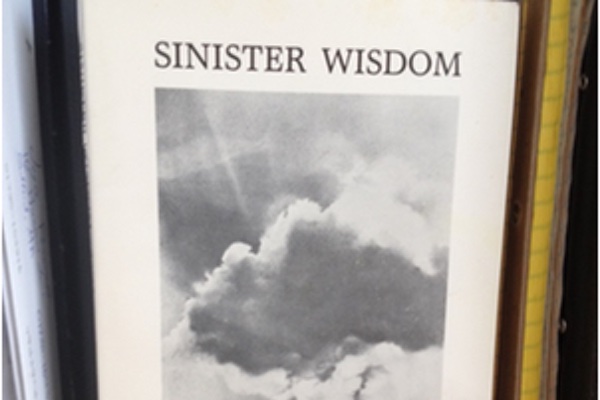Tweets can Be Poems, Too
By Joyce Peseroff, Contributing Editor


After 18 months of retirement, I finally unpacked the last box of books from my office at UMass Boston. I found books by colleagues; duplicate volumes of collected poems by Elizabeth Bishop, Emily Dickinson, and Jane Kenyon (I absolutely needed both at home and at work); books I bought at readings our program sponsored; and issue after issue of literary magazines. Among these were copies of the lesbian feminist journals Conditions and Sinister Wisdom from the 1980s—half a lifetime ago for me, more than a lifetime for most of my students.
If poetry is news that stays news, what can I learn from these poems, essays, and stories written during last century’s burgeoning feminist movement? I find literary prescience in the poetry and reviews written by Dorothy Allison for Conditions years before she published her groundbreaking memoir Bastard out of Carolina, and in poems by Gloria Anzaldúa published in Conditions and Sinister Wisdom before she was recognized internationally as a leading cultural thinker. I learn that Conditions printed 5,000 copies of The Black Women’s Issue, and four months later reprinted 5,000 more. In Sinister Wisdom 18, Lisa Leghorn and Katherine Parker’s essay “Woman’s Worth” argues for legal recognition of women’s unpaid work; 35 years later their theories and research ground Nita Lowry’s proposed Social Security Caregiver Act, which would credit women’s years of childrearing and caretaking when defining Social Security benefits.
Leafing through Sinister Wisdom 24, I find a magical three-page story by Joanna Russ, and a long narrative poem about the aftermath of rape by Minnie Bruce Pratt, written in the form of a waulking song from the Hebrides. I find Pratt’s blog and link to a poem about foreclosures from her latest book, Inside the Money Machine, on the Academy of American Poets website. Going back to Sinister Wisdom 23—A Gathering of Spirit, I discover how it was guest edited by Beth Brant, and read online that it was reissued five years later by Firebrand Books as the first published collection of writing by indigenous women in North America, as well as the first anthology edited by a Native American woman. Brant writes about her process, her self-doubts, her desire to include “voices traditionally silenced…So I wrote to prison organizations…I made contact with the anti-psychiatry network, Native women’s health projects.” I pick up Conditions 11/12, its first double issue. Poems by Joy Harjo and Kimiko Hahn still jump from the page, along with a novel excerpt by Sapphire. Sapphire writes in her contributor’s note, “I appreciate the Conditions editors’ decision to publish ‘The Last Day of Winter.’ I am angered and saddened by their decision not to publish material I sent concerning gentrification, Zionism, and imperialism in the lesbian, gay, and world community.”
So what did I feel after rereading these scrupulously made collections aiming to scour the world of its inequalities, pieties, assumptions, and privileges? That thirty-plus years later, these issues still resonate, still move unsettled through our fractured polis? That the possibility of understanding and empathy created through language has shriveled as tweets replace essays and images supersede print? Well, tweets can be poems too, and art encompass a collage of words and images (Conditions 6 includes flash fiction by the artist May Stevens). The editors who gave their time and labor to create these journals—Dorothy Allison, Elly Bulkin, Cheryl Clarke, Jan Clausen, Michelle Cliff, Jewelle Gomez, Carroll Oliver, Nancy Clarke Otter, Melanie Kaye/Kantrowitz, Mirtha N. Quintanales, Adrienne Rich, Debbie Schaubman, Rima Shore, Michaele Uccella, Adrienne Waddy, and others whose names I can’t give since I don’t have a complete set of issues—moved something new into the house of literature and, invited or not, meant to stay and change what they found. These writers believed words make things happen, and that writing belongs to everyone.
Originally published on joycepeseroff.com

